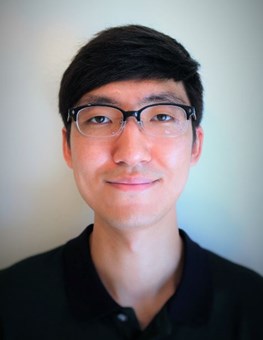
Homin Song, a postdoctoral researcher at Argonne National Laboratory, will present a lecture on Thursday, January 23, 2020, at 4:00 p.m., in EERC 103.
The lecture is part of the Mechanical Engineering-Engineering Mechanics Graduate Seminar Speaker Series. It is presented in part by the Tomorrow Needs Faculty and Scientist Seminar Series sponsored by the Michigan Tech colleges of Computing and Engineering, Great Lakes Research Center, and Institute of Computing and Cybersystems. Learn more at mtu.edu/icc/seminars.
Song completed a Ph.D. in civil engineering at University of Illinois at Urbana-Champaign in 2019. He holds an M.S. degree from Korea Advanced Institute of Science and Technology (KAIST) and a B.S. from Hanyang University, also in civil engineering.
Homin’s research interests lie in nondestructive evaluation (NDE) and structural health monitoring (SHM) based on ultrasonic wave motion. His broad spectrum of expertise encompasses the topical areas of NDE/SHM, such as advanced ultrasound sensing technology, signal/data processing, numerical modeling, and experimental solid mechanics. His current postdoctoral research aims at developing a super-resolution non-contact ultrasonic array imaging technique via deep learning.
Homin was awarded the Student Best Paper Award at the 2017 International Workshop on Structural Health Monitoring, the Student Award for Research on NDT from American Concrete Institute, and the Outstanding Paper Award from the Korean Society of Civil Engineers.
Abstract: Nondestructive evaluation (NDE) and structural health monitoring (SHM) systems are essential for today’s modern structures to ensure their long-term performance and reduced maintenance cost. The talk will present two full-field high-resolution ultrasonic imaging approaches to detect, image, and characterize internal damage in various materials and structural elements. The first approach is a near-field imaging technique via noncontact ultrasonic scanning measurements. Development of novel ultrasonic scanning hardware, numerical and experimental wave mechanics study to understand complicated wave scattering, and wavefield data processing are presented. A unique application of the developed approach to large-scale concrete structures under realistic damage-promoting environments is also presented. The second approach is a far-field imaging technique based on deep learning. A novel hierarchical multi-scale deep learning approach designed to image subtle structural defects is presented. The results are compared with those obtained by a widely accepted high-resolution imaging technique, Time-reversal MUSIC.